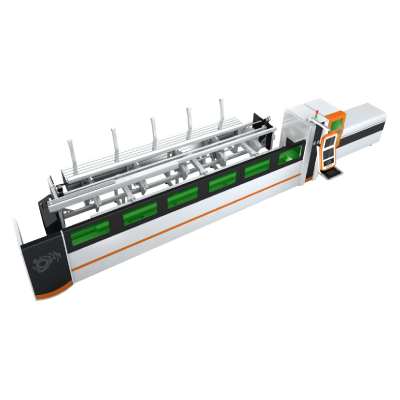Fiber optic laser cutting is becoming an increasingly pivotal technology in industrial manufacturing, marking a paradigm shift in how materials are processed. This high-precision cutting method leverages laser technology combined with fiber optics to achieve unparalleled accuracy and efficiency. As industries strive to optimize production and enhance product quality, fiber optic laser cutting is emerging as a go-to solution, transforming how manufacturers approach various cutting tasks.
At the heart of fiber optic laser cutting is the laser source itself—typically a solid-state laser—that produces a concentrated beam of light. This laser beam is then transmitted via fiber optic cables, which allows for high flexibility in setup and configuration. Unlike traditional CO2 laser systems, fiber lasers have a much smaller wavelength, resulting in more compact and easily focused beams. Consequently, this leads to finer cuts and reduced heat affected zones, minimizing the risk of material distortion.
One of the most significant advantages of fiber optic laser cutting is its ability to cut a diverse range of materials, including metals like steel, aluminum, copper, and even some non-metal materials such as plastics and composites. This versatility makes fiber optic laser cutting an ideal solution for various industries—ranging from automotive and aerospace to electronics and medical devices—where precision and quality are paramount.
Furthermore, this technology contributes to environmental sustainability in manufacturing. Fiber optic laser cutting tends to produce less waste than conventional cutting methods. Since the process is so precise, it reduces the margin of error and minimizes leftover materials. Additionally, fiber lasers are energy-efficient, consuming less power than CO2 lasers, which lowers overall energy costs and carbon emissions.
Maintenance and operational costs are also notably reduced with fiber optic laser cutting systems. The robustness of fiber lasers means fewer moving parts and lower wear and tear compared to traditional cutting systems. This reliability translates into less downtime and greater productivity on the factory floor. Moreover, fiber optic systems can often run unattended, allowing for increased efficiency and throughput without compromising quality.
The quality of the finish achieved through fiber optic laser cutting is another notable benefit. It’s well-known that a clean cut enhances the aesthetic appeal of finished products, but more importantly, the precision cuts lead to better assembly of components in later manufacturing processes. This is critical in industries such as automotive and aerospace, where even minute tolerances can significantly impact performance and safety.

Exploring Fiber Optic Laser Cutting: Revolutionizing Precision in Industrial Manufacturing with Advanced Technology
Innovations in fiber optic laser cutting technology are continually evolving. Recent advancements are focusing on automation, incorporating artificial intelligence and machine learning algorithms to optimize cutting paths and improve efficiency even further. Systems can now analyze the best cutting strategies on the fly, adapting in real time to variations in material thickness or type, thus avoiding potential errors that could lead to waste or rework.

Exploring Fiber Optic Laser Cutting: Revolutionizing Precision in Industrial Manufacturing with Advanced Technology
As industries look for ways to stay competitive in an increasingly globalized market, investing in fiber optic laser cutting technology is not merely an option; it’s becoming essential. Businesses are under pressure to deliver higher quality products faster and at a lower cost. Fiber optic laser cutting allows manufacturers to meet these demands and, in many instances, exceed customer expectations.

Exploring Fiber Optic Laser Cutting: Revolutionizing Precision in Industrial Manufacturing with Advanced Technology
Nevertheless, the integration of fiber optic laser cutting into existing manufacturing workflows does come with challenges. Companies must invest in training personnel to operate these advanced systems and understand the intricacies of the technology. There’s also a need to align this cutting technology with other manufacturing processes to create a seamless operation, which might require additional resources and planning.
In conclusion, fiber optic laser cutting represents a significant advancement in industrial manufacturing technology. Its benefits—crucial for maintaining quality, efficiency, and sustainability—make it a favorite among manufacturers across various sectors. As the manufacturing landscape continues to evolve, fiber optic laser cutting is set to play a vital role in shaping the future of production, driving innovation, and enabling businesses to navigate the challenges of the modern market landscape effectively. Businesses that embrace this technology will likely find themselves at the forefront of their industries, leading the charge into a more efficient and precise future. Fiber Laser Machine For Cutting Metal
